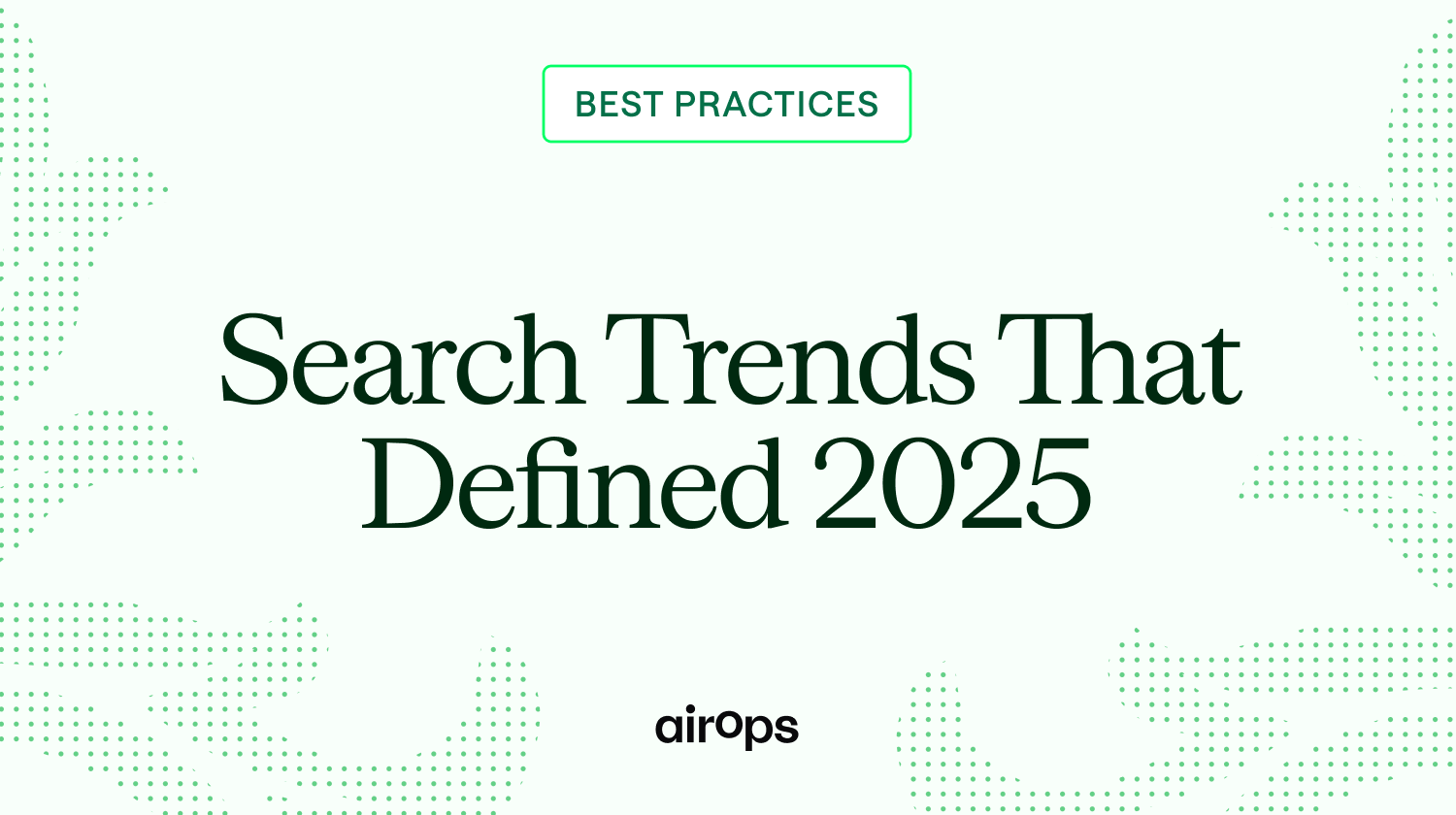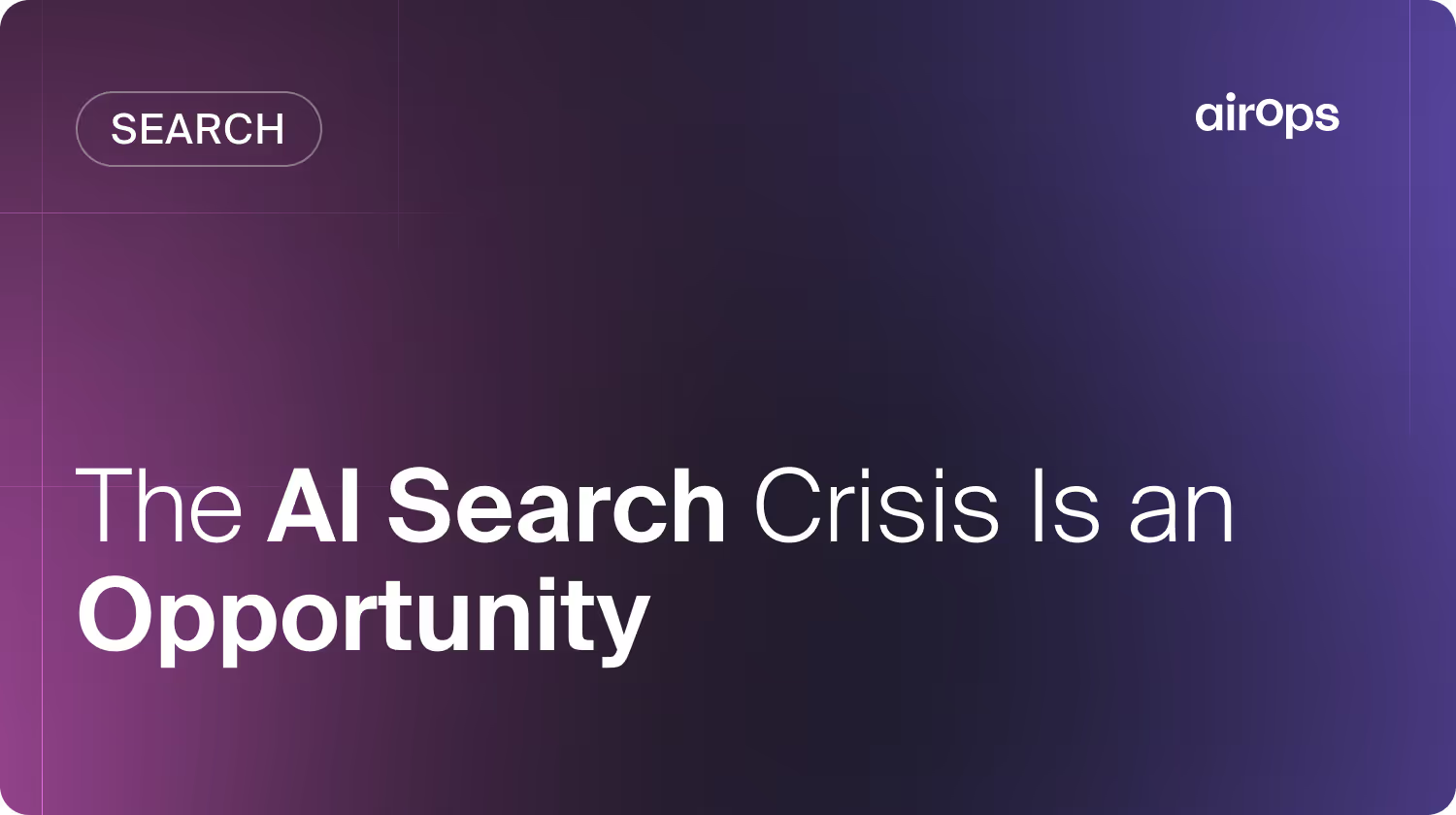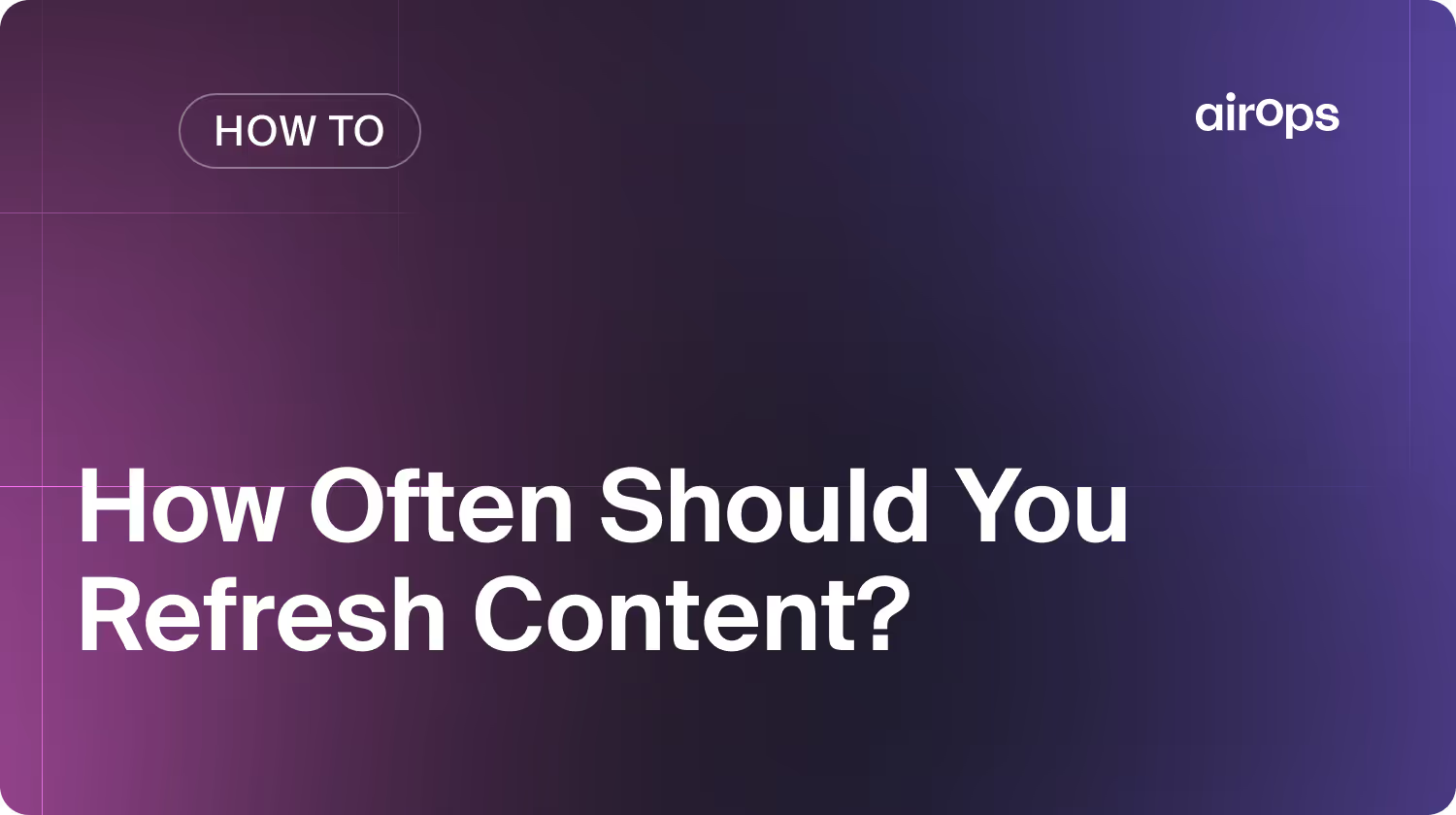How to Rewrite Website Content

- Rewriting website content improves SEO, user experience, and alignment with evolving brand and business goals.
- A successful rewrite involves structured audits, audience targeting, AEO optimization, and conversion-focused messaging.
- Learn how to rewrite website content step-by-step to boost performance, maintain relevance, and drive measurable results.
Rewriting website content is essential for keeping your site relevant, discoverable, and aligned with your brand. Whether you’re updating outdated information, improving SEO performance, or reflecting a new messaging strategy, regular rewrites help sustain engagement and authority.
But rewriting goes beyond surface-level edits. Effective rewrites realign content with audience intent, business goals, and SEO best practices—ensuring each page delivers clarity, value, and measurable impact.
Why Rewrite Website Content?
Rewriting website content keeps your site relevant, engaging, and competitive. It supports search and answer engine optimization, user experience, and business growth by aligning your pages with user expectations and search algorithms.
- Improves User Experience: Clear, up-to-date content helps visitors find what they need quickly. Well-structured pages reduce bounce rates and increase time on site.
- Builds Authority: Current, accurate information signals credibility. Regular updates position your brand as a trusted, expert source.
- Boosts Conversion Rates: Strong messaging and optimized calls-to-action guide visitors toward desired outcomes—like purchases, signups, or contact requests.
- Improves Search Performance: Rewritten content that follows modern SEO practices is more likely to rank well in search results. Updating keywords, metadata, and internal links improves crawlability, relevance, and topical authority—key factors for higher visibility.

How to Rewrite Website Content
Revitalizing your website content requires a strategic, data-informed approach. Follow these steps to rewrite your content effectively:
1. Conduct a Content Audit
A content audit helps you identify which pages need rewriting and why. Use performance data to prioritize high-impact updates and ensure each rewrite aligns with your business goals.
Key actions:
- Analyze performance metrics such as traffic, bounce rate, and conversion rate using tools like Google Analytics.
- Check for outdated content, broken links, or irrelevant information that may confuse or mislead users.
- Identify content gaps by comparing your pages to current audience needs, competitor coverage, or trending search queries.
- Evaluate relevance: Is each page still aligned with user intent and your brand messaging?
Step 2: Understand Your Customers
Effective rewrites start with a clear understanding of your target audience. If your ideal customer profile (ICP) has shifted over time, your content should evolve to reflect those changes.
Follow these steps to tailor your content for the right audience:
- Create a Buyer Persona: Develop a detailed profile that includes demographics, pain points, goals, and behaviors. A strong buyer persona ensures your content speaks directly to your audience’s needs and motivations.
- Identify Search Intent: Determine what your visitors are trying to accomplish when they land on each page. Are they researching, comparing, or ready to take action? Match your content format and tone to their intent—informational, navigational, or transactional.
- Set Clear Content Objectives: Define measurable goals for each rewrite. Common objectives include increasing organic traffic, reducing bounce rate, boosting time on page, or improving conversions.
- Align With Business Goals: Every rewritten page should support a larger business objective—whether it’s lead generation, brand awareness, or product adoption. Balance user value with strategic outcomes.
3. Optimize for Search and Answer Engines
Rewriting content isn’t just about improving SEO—it’s also about making your content visible to AI search engines. Apply AEO and SEO best practices to improve both traditional rankings and AI citation potential.
Improve heading structure: Use a clear heading hierarchy (H1 → H2 → H3) to organize ideas semantically. Include keywords naturally in headings to help both search engines and large language models (LLMs) understand your content’s structure and relevance.
Refresh Internal and External Links
- Link to relevant internal pages to improve crawlability and semantic connections.
- Ensure external links point to authoritative, up-to-date sources that LLMs may reference.
- Avoid overlinking—too many links can dilute value and reduce extractability.
Optimize image alt tags: Write descriptive, keyword-rich alt text to support accessibility and help AI models interpret non-text content. Compress images to protect page speed, a ranking factor for SEO and visibility.
Replace outdated information: Update statistics, research, and examples with current, credible data. AI systems prefer recent, fact-based content when surfacing answers. Outdated information decreases trust, utility, and citation potential.
Optimizing for SEO and AEO ensures your rewritten content is discoverable by both search engines and AI systems—driving visibility, authority, and traffic from every channel.
Step 4: Optimize for Conversion
Conversion optimization turns passive visitors into engaged customers by guiding them to take meaningful actions—like purchasing, signing up, or requesting a demo. As you rewrite your website content, align every element with your conversion goals.
- Add Clear, Action-Oriented CTAs: Use concise, benefit-driven calls-to-action (CTAs) that prompt users to take the next step. Avoid generic phrases like “Click here”.
- Place CTAs Strategically: Position CTAs after persuasive sections or near value-driven statements. Use contrasting colors, whitespace, or buttons to make them visually prominent—on both desktop and mobile.
- Use Benefit-First, Persuasive Language: Highlight benefits over features. Explain how your solution solves a problem, saves time, or improves results. Reinforce your message with emotional triggers and social proof like testimonials, reviews, or case studies.
- Communicate Your Unique Value Proposition (UVP): Clearly state what sets your offering apart. Whether it’s faster results, lower cost, or personalized service, your UVP should be woven into headlines, subheadings, and CTA copy.
- Test and Improve: Use A/B testing tools like Google Optimize or VWO to test variations of headlines, CTAs, or page layouts.
Conversion-optimized content ensures that every page doesn’t just rank—but also drives measurable business results.
Step 5: Edit, QA, and Review
Editing and quality assurance (QA) are critical final steps in the rewriting process. Even strong content can lose impact if it contains errors, awkward phrasing, or inconsistent tone.
Proofread for Accuracy and Clarity: Check for grammar, spelling, and punctuation errors. Ensure every sentence is clear, concise, and free of ambiguity.
Review for Structure and Flow: Make sure content flows logically from section to section. Use short paragraphs, clear transitions, and bullet points to improve scannability—especially for users skimming on mobile.
Ensure Tone and Voice Consistency: Match the tone of your rewritten content to your brand voice—whether it’s authoritative, conversational, or technical. Consistency builds trust and reinforces brand identity.
Verify On-Page SEO and AEO Elements
• Confirm proper use of headers (H1–H3)
• Double-check keyword placement
• Ensure meta tags, internal links, and alt text are in place
• Validate extractability for AI systems (e.g., clear definitions, structured lists, standalone facts)
Schedule Ongoing Content Reviews: Rewriting isn’t one-and-done. Set a regular review cadence (e.g., every 6 or 12 months) to ensure your content stays fresh, accurate, and aligned with shifts in user needs, search intent and algorithms.
Common Questions About Rewriting Website Content
How Often Should I Rewrite Website Content?
Review your content at least every six months. In fast-moving industries, consider quarterly updates for high-traffic or conversion-critical pages to maintain relevance and performance.
Can I Rewrite Content Myself, or Should I Hire a Professional?
You can rewrite content in-house if you have expertise and bandwidth. Hiring a professional ensures writing quality, outside perspective, and adherence to SEO best practices—saving time while improving impact.
What Tools Can I Use to Simplify the Content Rewriting Process?
Use analytics tools (like Google Analytics or GA4) to identify underperforming content. AI-powered platforms like AirOps help rewrite and optimize content efficiently, ensuring consistency, quality, and SEO alignment at scale.
How Do I Measure the Success of My Content Rewriting Efforts?
Track KPIs such as search rankings, organic traffic, bounce rates, and conversions. Comparing performance before and after rewrites helps validate your strategy and guide future improvements.
Rewriting Is the Key to Lasting Content Performance
Rewriting website content is one of the most effective ways to improve SEO, increase engagement, and align your site with current business goals. Unlike minor updates, a strategic rewrite transforms outdated or underperforming pages into high-impact assets that drive measurable results.
By following a structured process—auditing content, understanding your audience, optimizing for SEO and AEO, and refining for conversions—you ensure every page is purpose-built for both users and AI-driven platforms like ChatGPT, Google AI Overviews, and Perplexity.
Why Use AirOps to Rewrite Website Content at Scale
Manual rewrites are time-consuming, error-prone, and hard to scale. AirOps gives teams the tools to update content efficiently without compromising quality.
Here’s how AirOps simplifies the process:
- Customizable Workflows for Scale: Build flexible, repeatable workflows tailored to your content types—whether you’re rewriting blog posts, product pages, or entire site sections—so you can scale content updates without losing consistency or control.
- Power Agents: Automatically transform outdated content into SEO- and AEO-optimized copy using pre-built Power Agents.
- Templates and Workflows: Leverage pre-built workflows to rewrite entire libraries of content across product pages, blogs, or landing pages—fast.
- CMS Integration and Publishing: Push rewritten content directly into platforms like WordPress or Webflow using native integrations.
Ready to scale your content strategy while maintaining precision and consistency? Start building with AirOps today.
Win AI Search.
Increase brand visibility across AI search and Google with the only platform taking you from insights to action.
Get the latest on AI content & marketing
Get the latest in growth and AI workflows delivered to your inbox each week
.avif)





